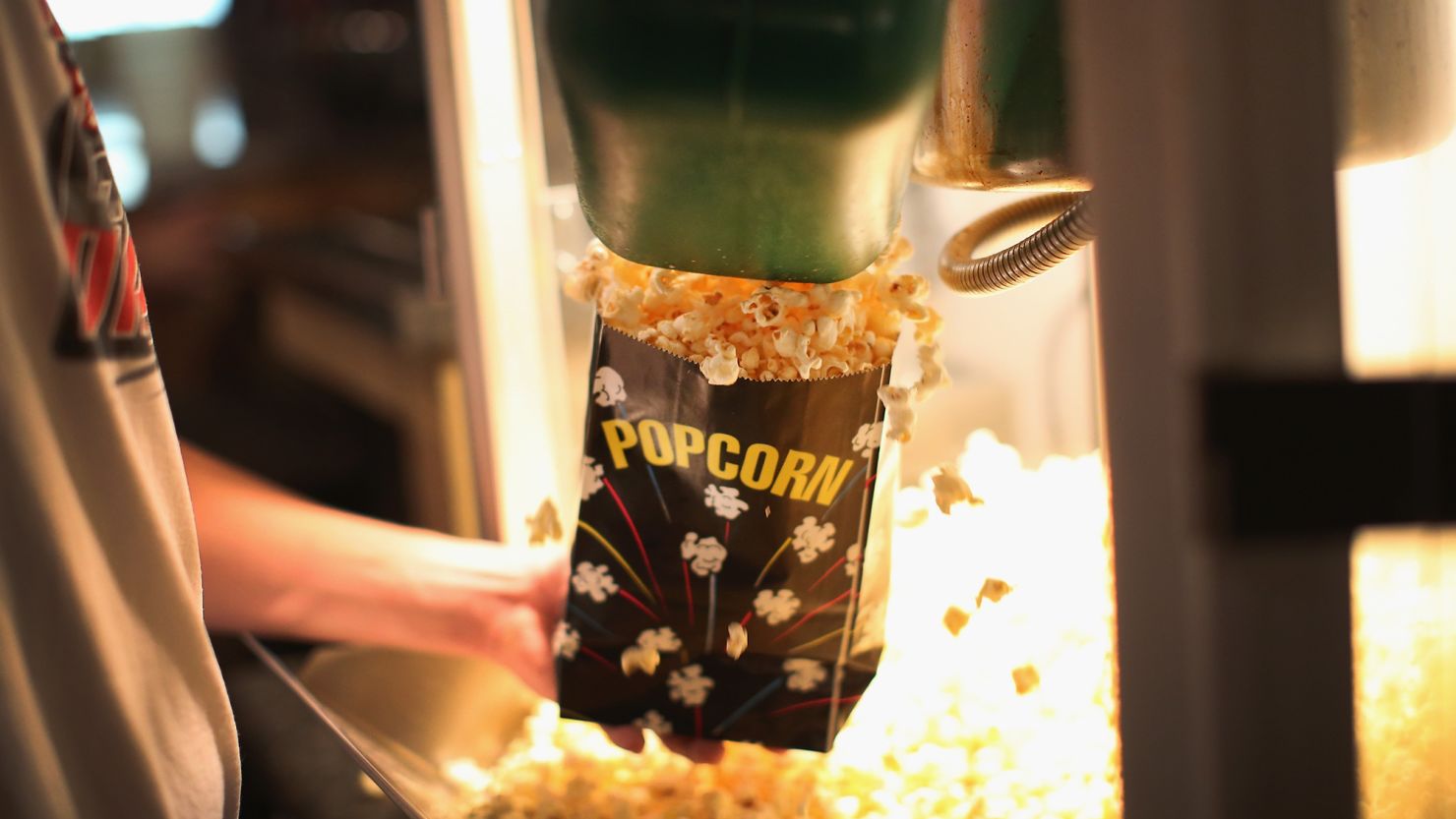
In Short
- Movie theater companies are now focusing more on their real estate and concession sales.
- The shift is driven by the need to fill theater capacities and increase profitability.
- Popcorn sales have become a central revenue stream, often more reliable than ticket sales.
- The industry has evolved from merely showing movies to maximizing the use of their physical spaces.
- This trend reflects broader changes in how theaters operate and generate income.
TFD – Movie theater companies are increasingly viewing themselves as real estate ventures, focusing more on filling their spaces and selling concessions rather than just showing movies. This shift marks a significant change in the industry, where the aroma of popcorn often outlasts the appeal of the films themselves.
The movie experience is well underway even before the house lights go out, with one concession-stand dish taking center stage.
Its distinct and frequently deeply evocative aroma permeates the lobby, roasty and buttery. A kernel hits the side of a kettle made of stainless steel, giving away a little bit of the percussion symphony that lies ahead. The contents are scooped into a tub and, if you’re lucky, sprinkled with actual melted butter as a white, fluffy wave boils up.
And those delicate puffs give way to a gentle crunch when you sink into a cushioned seat.
Memorial Day weekend marks the official beginning of the summer blockbuster film season, and for over ninety-nine years, and generation after generation, the theater and this salty and buttery pleasure have coexisted harmoniously.
Paul Dergarabedian, senior media analyst for Comscore, told CNN that popcorn and movies are “as inextricably linked as Fred Astaire and Ginger Rogers, peanut butter and chocolate; and, as such, represent perhaps one of the greatest duos in modern history.” “It’s difficult to think of a more ideal pairing, and one that has permeated and profoundly impacted culture.”
According to the firm, AMC Theaters, the biggest movie theater chain in the country, opens enough popcorn annually to fill 222 Olympic-sized swimming pools. However, this ideal (and extremely lucrative) combination wasn’t always the case: for a long while, movie theaters had little interest in serving the snack.
A butter and oil-based match
In Andrew F. Smith’s “Popped Culture: A Social History of Popcorn in America,” the origin tale of popcorn is rife with lore, and its “shotgun marriage” to the movies is no less dramatic.
When Smith documented the growth of popcorn, he refuted the majority of the deeply held myths surrounding the food. It was not the “first Thanksgiving” side dish; rather, American sailors returning from South America brought it to New England in the first part of the 1800s.
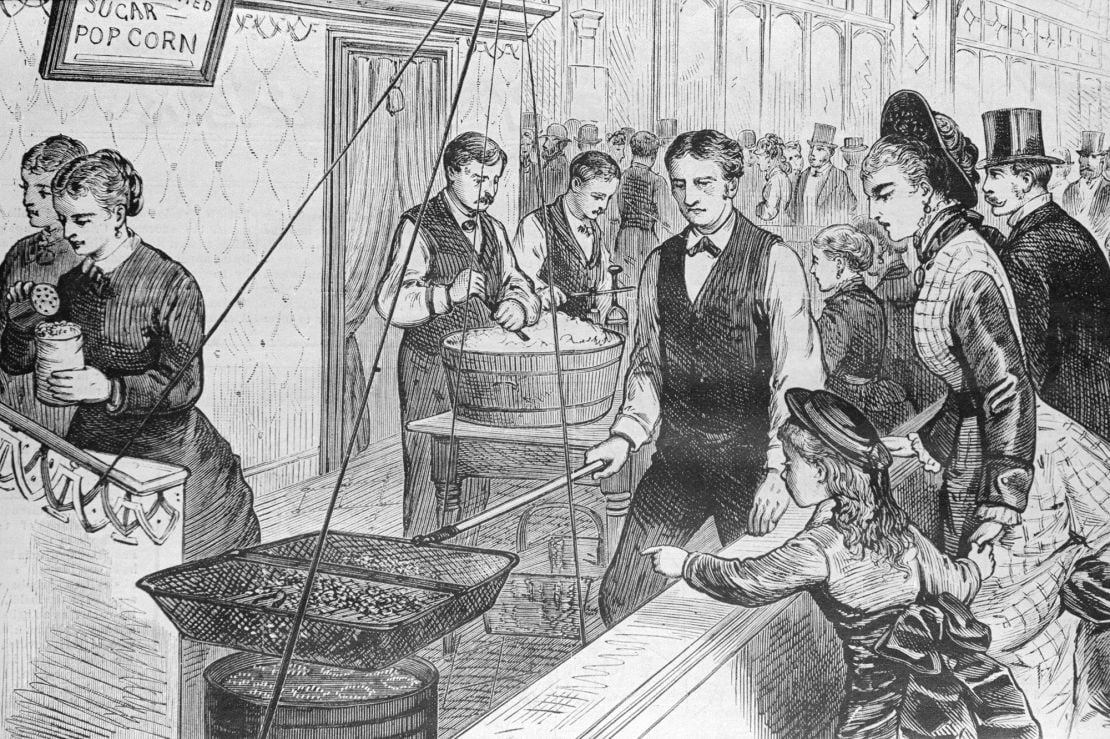
By the 1840s, popping corn had become a popular pastime following the invention of “wire-on-the-fire” poppers and popping apparatuses. Popcorn vendors sprung up at fairs, circuses, and on city streets in the next decades. More businesses started to arise, Cracker Jack established itself as a mainstay at baseball stadiums, and a cautious romance with the movie theater industry started.
That industry flourished in the early 20th century, helped along by the invention of the “talkie.” According to Smith, a startling 90 million individuals were weekly moviegoers by 1930.
Popcorn vendors said the throng looked ripe for the picking, but theater owners resisted.
According to Smith, “some owners felt that selling all concessions was ‘beneath their dignity’ or an unnecessary inconvenience.” “As popcorn and Cracker Jack were being sold, hawkers would go along the aisles with baskets during the wild, burlesque days. A large portion of the popcorn was scattered across the floors and thrown into the air.
Popcorn crumbs would ruin the priceless carpet at movie theaters that was designed to resemble the opulent lobby areas.
However, movie theater owners had a change of heart, and the surge for popcorn coincided with one of the most unlikely economic times, the Great Depression.
Popcorn was a reasonable indulgence for most Americans, costing about five or ten cents per bag, according to Smith.
Since installing vents in the theaters would have been too expensive, popcorn was first made outside of the buildings, where operators rented space to vendors. But the concession was brought in-house as rivals began to appear and rumors of “popcorn wealth” began to circulate.
Smith claimed that the reason popcorn sold so well was due to its scent, which some theater owners had allegedly previously disliked. “When the popcorn was popping, the aroma was at its strongest. Business increased as soon as the machines were positioned in the lobbies.
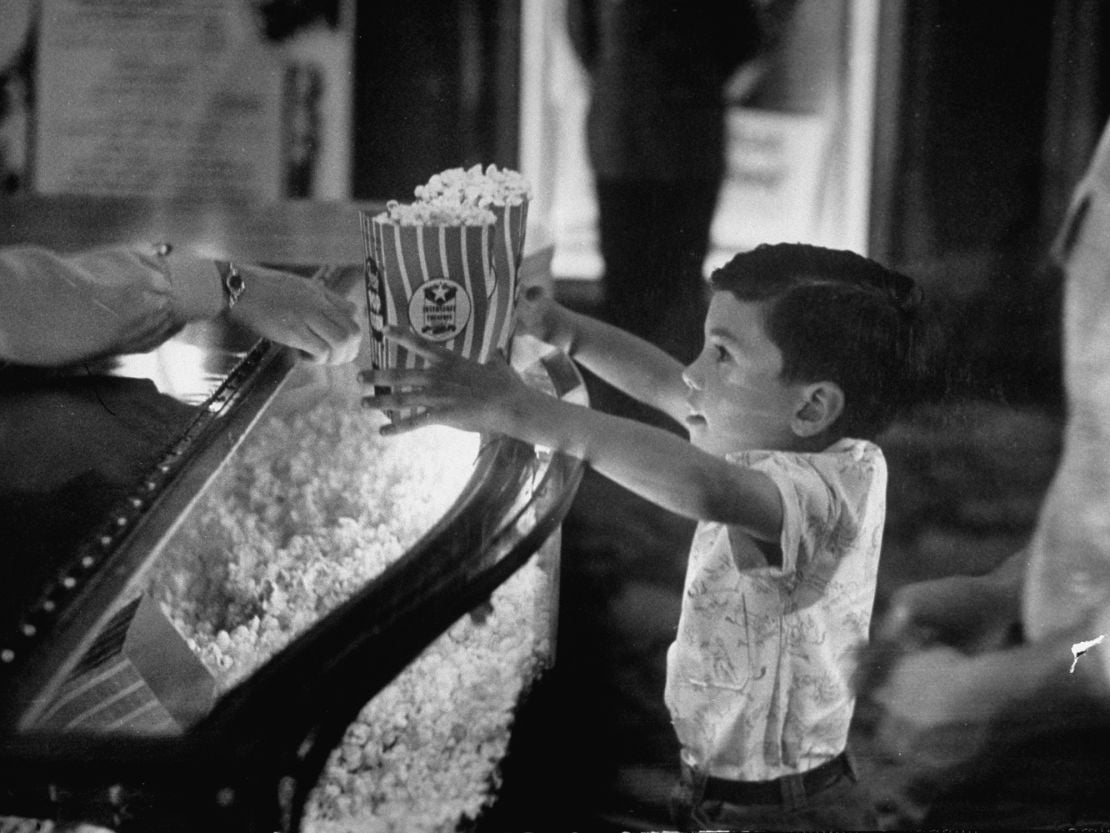
A popular national activity
Here in South Minneapolis, a recent Sunday morning saw the continuation of a long-standing father-son ritual at the Riverview Theater, a single-screen movie theater tucked away among bungalows that date back a century.
John Aitkin, 44, and his father, John Sr., have been going to the Riverview to see movies since they were little. They were joined by other devoted participants in the monthly tradition as they anticipated the premiere of “Kingdom of the Planet of the Apes”: a bucket of popcorn and a few Coke cans.
“It’s just a hobby,” the younger Aitkin remarked. “Eating it makes me feel like everything is alright. With merely “popcorn and a movie,” you can escape the stress of everyday life.
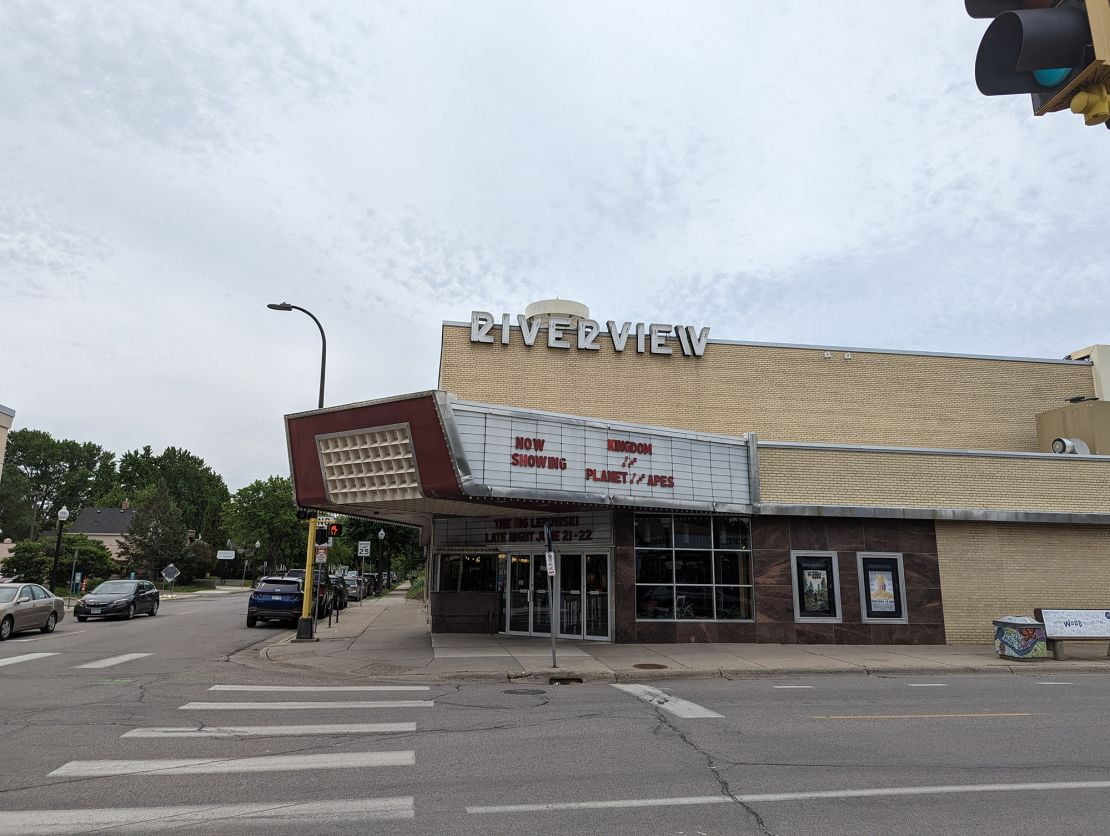
It’s also a reasonably priced getaway. Aitkin paid a whopping $2.50 for the medium bucket, which was half the cost of his ticket that day. (This is the exception: Popcorn can easily cost three or four times that in some areas.)
The 75-year-old building’s walls aren’t the only place where people know about and love Riverview popcorn. According to Riverview Theatre’s owner, Loren Williams, the theater was able to navigate 2020 thanks to its longstanding to-go service.
Regarding the assistance from the community, he told CNN, “When the pandemic came, that was all we had.
The image after the pandemic
People were spending more on concessions and purchasing premium tickets following the pandemic reopenings, according to Alicia Reese, a Wedbush analyst covering the media and entertainment sector.
According to her, “we believed that there was simply pent-up demand for people to go out and treat themselves.” However, this pattern has continued. It is still expanding and has not decreased.
For theater owners, that’s encouraging news because attendance hasn’t yet reached pre-pandemic levels. This is because, at their core, movie theaters are mostly real estate and food service businesses, according to Ricard Gil, an associate professor at Queen’s University in Canada with a focus on organizational economics.
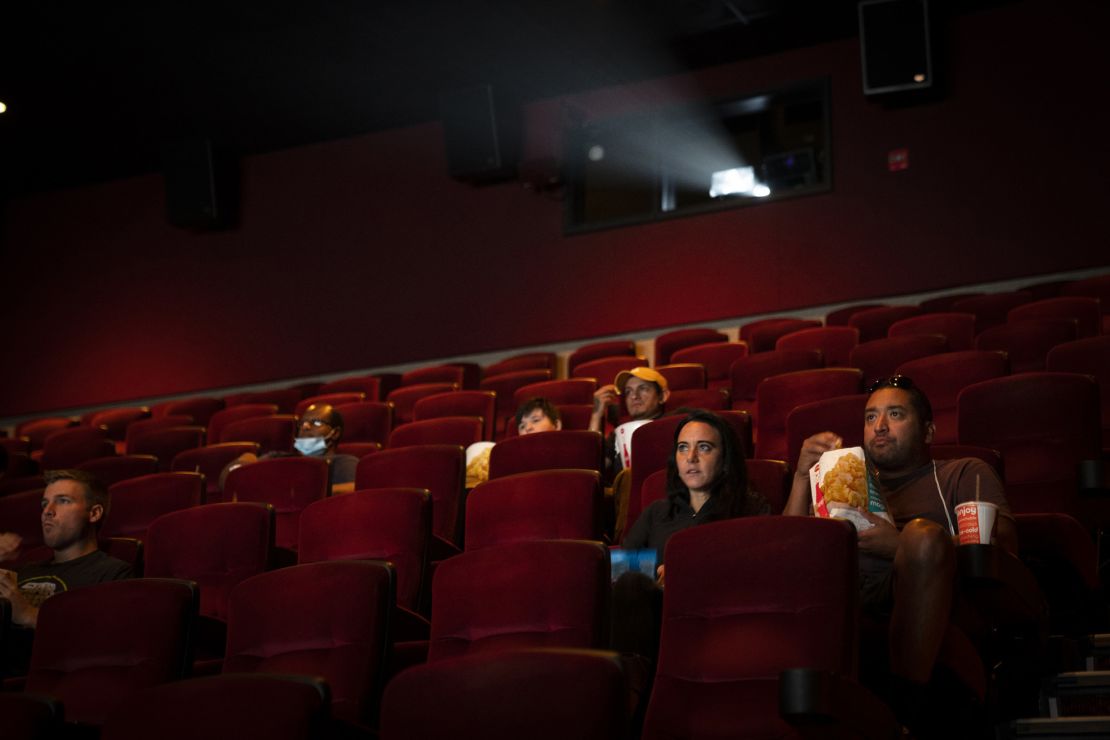
Gil, who has previously investigated why movie theater concessions are so expensive, stated that the ticket revenue is often divided 50/50 between theater operators and the film studios.
That half—or frequently even less—is insufficient for the exhibitors to cover all of the remaining expenses.
According to Wedbush’s Reese, concessions make up roughly one-third of total domestic sales at the two biggest US chains, AMC and Cinemark.
“There will be a profit on over 80% of that revenue, which is significant and not like most other businesses,” she stated. “The reason for that is that popcorn, which is relatively inexpensive, accounts for the majority of concession sales.”
Popcorn-filled sandworms and drones
According to financial documents, AMC Theatres’ food and beverage division brought in $1.67 billion in sales in 2023. In contrast, that exceeds the yearly sales of BJ’s, Waffle House, and Red Robin restaurant franchises combined.
Vice President of Food and Beverage Product Strategy at AMC Theatres, Nels Storm, stated in an interview that “the sun rises and sets on our concession business.” Furthermore, he claimed that popcorn is still the “venerable force” behind that company.
However, popcorn needs to change with the times due to external threats to the industry, like at-home entertainment and additional options vying for consumers’ hard-earned money.
For AMC, this has meant introducing a range of microwaveable and pre-made popcorn that is available at stores like Walmart and Kroger, with tastes that are either distinctive or inspired by movies, and mainly focusing on merchandising.
In the industry jargon, these are called collector Concession Vehicles (CCVs), and they frequently arrive with collector cups and popcorn buckets.
These have included the iconic Dune: Part Two sandworm, R2-D2 popcorn buckets, Ghostbusters’ Ecto 1, and, arriving in June, a “Garfield” CCV with a plush doll — a fitting throwback to the bygone era when stuffed versions of the lasagna-loving tabby were suction-cupped to car windows.
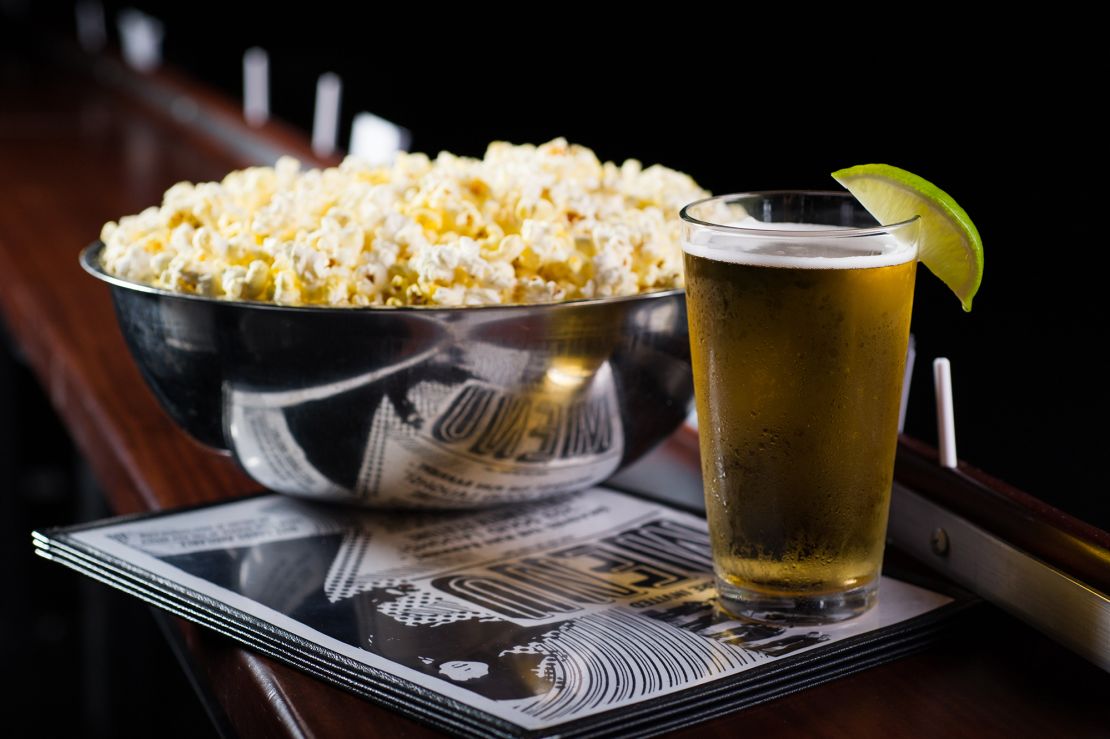
For many years, movie theaters have expanded their offerings; some have even gone so far as to provide dine-in theaters. Founded in 1997, Alamo Drafthouse features a full bar and cuisine (with servers!). Popcorn continues to be the most popular food item ordered at Alamo, despite the complete menu, according to Heather Morgan, chief of staff and strategy.
She mentioned that Alamo made popcorn with berbere spices for “Dune: Part Two,” and that the company is always trying new things with their concessions, including popcorn.
People are wanting to try the new and varied flavors, so we can expect an increase in sales, she said.
Popcorn with chocolate and native flavors
Smaller theaters can also benefit from these distinct perspectives.
Nitehawk Cinema in Brooklyn, New York is well-known for its truffle popcorn. A formula from the University of Iowa’s student cinema organization is used by the nonprofit FilmScene theater in Iowa City.
Executive director and co-founder of FilmScene Andrew Sherburne sent an email to CNN saying, “We don’t offer butter, and we promise you don’t need it.”
Emerald City moviegoers in Seattle were ecstatic to see the famous Cinerama theater reopened following a brief closure and to have its renowned chocolate popcorn made again.
Founder Christian Meoli created a line of eight artisan popcorns at Cinelounge Cinemas in California, which are available for purchase in-store, online, and in the theater.
The movie-themed menu items, which include flavors like bourbon caramel, rosemary, and cinnamon churros, also act as a catalyst for investment in the film industry: According to him, the earnings support fellowships, screenings, and equipment for new filmmakers.
One thing will not change in the movie theater industry, according to Gil of Queen’s University.
“Movie theater companies have realized that they are real estate companies, and they have capacity, and they need to fill the capacity, and they’ll do whatever (it takes) to actually do that,” Gil said. “The romanticism of showing movies has gone away a little bit,” Gil said. “Movies will stop being shown in theaters before popcorn sales do.”
Conclusion
The evolving strategy of movie theater companies highlights a significant shift from traditional film exhibition to leveraging their real estate and concession sales. As theaters adapt to changing market dynamics, the focus on popcorn and other concessions becomes increasingly crucial for their survival and growth. This transformation underscores the resilience and adaptability of the industry, ensuring that while the format of entertainment may change, the essential experience of enjoying popcorn at the movies remains a cherished tradition.
Connect with us for the Latest, Current, and Breaking News news updates and videos from thefoxdaily.com. The most recent news in the United States, around the world , in business, opinion, technology, politics, and sports, follow Thefoxdaily on X, Facebook, and Instagram .
